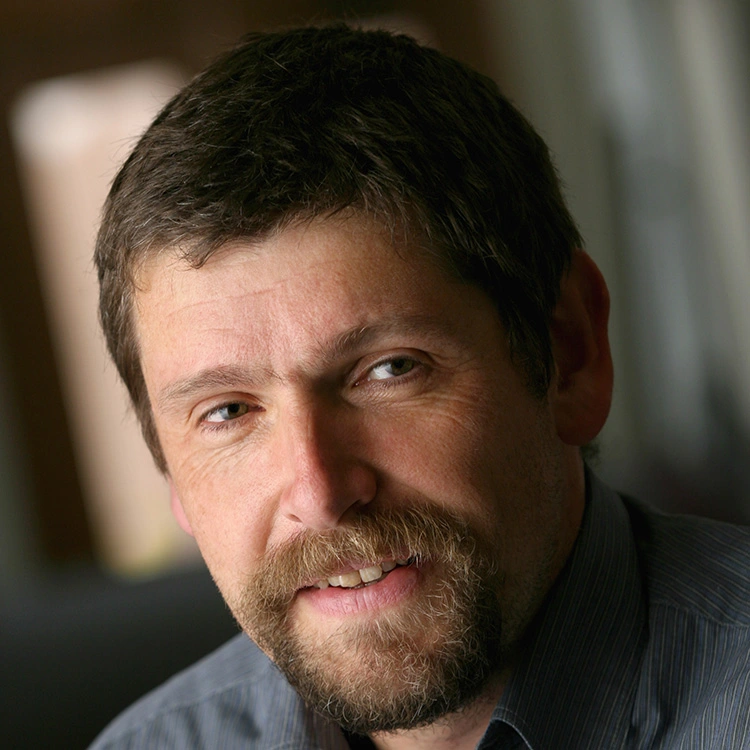The entire universe—galaxies, stars, and planets—originally condensed from a vast network of tenuous, gaseous filaments, known as the intergalactic medium, or the gaseous cosmic web. Most of the matter in this giant reservoir has never been incorporated into galaxies; it keeps floating about in intergalactic space, largely in the form of ionized hydrogen gas.
Michael Rauch uses large telescopes, like the Magellans, to take spectra of distant background quasars, to find absorption lines caused by gas clouds located between the quasars and us. Each line reveals much about the physical properties and the chemical composition of a particular cosmic cloud. The hundreds of absorption lines between us and each quasar—often referred to as the Lyman alpha forest—sample almost the entire size of the universe and record changes in the cosmic web from the earliest galaxies to the present. Rauch and his collaborators have determined many of the basic properties of the intergalactic medium, including its matter density, temperature, metallicity, the small-scale density structure, and most recently, the turbulent motion in the gas.
With his theorist colleagues, Rauch has also proposed and evaluated models for the interpretation of quasar absorption lines in the context of galaxy formation. Currently, he is in the middle of an observational survey of gravitationally lensed quasars and close pairs to study the large-scale motions in the gas. He wants to understand how the cosmic web follows the general expansion of the universe, how it stretches and contracts, and how it is funneled into future galaxies. Galaxies not only take in gas, they also return processed and chemically enriched matter back to the extragalactic realm. Rauch also hopes to quantify the environmental impact of galaxies on the surrounding intergalactic medium.
In another area, Rauch is performing ultra-deep experimental searches for faint radiation emitted by high redshift galaxies and by the intergalactic medium itself. These observations may ultimately allow us to construct extremely detailed images of the distribution of matter in the young universe.
With his theorist colleagues, Rauch has also proposed and evaluated models for the interpretation of quasar absorption lines in the context of galaxy formation. Currently, he is in the middle of an observational survey of gravitationally lensed quasars and close pairs to study the large-scale motions in the gas. He wants to understand how the cosmic web follows the general expansion of the universe, how it stretches and contracts, and how it is funneled into future galaxies. Galaxies not only take in gas, they also return processed and chemically enriched matter back to the extragalactic realm. Rauch also hopes to quantify the environmental impact of galaxies on the surrounding intergalactic medium.
In another area, Rauch is performing ultra-deep experimental searches for faint radiation emitted by high redshift galaxies and by the intergalactic medium itself. These observations may ultimately allow us to construct extremely detailed images of the distribution of matter in the young universe.
CV
- B.Sc. in Physics, 1988, Gutenberg University, Mainz
- Ph.D. in Astronomy, 1992, Cambridge University
